Gary Wornell travels to the source of the pungent smells that orchestrate his daily life in Nepal.
One of the first things I noticed when I stepped off the plane for the first time at Tribhuvan International Airport over ten years ago, was the sensation coming in through my nostrils. I had come from a manicured and sanitised Helsinki where the only olfactory sensation was the slight fishy saltiness drifting in the breeze off the Baltic Sea and the scent of fresh coffee from the plethora of cafes that line the Esplanadi park in the centre of town.
Suddenly I was aware of an aroma in the air unlike anywhere else I had been. As the taxi wound its way through a jungle of narrow winding streets teeming with people, pungent odours wafted in through the windows; unfamiliar spices spilling out of steam-filled roadside restaurants, diesel fumes belching thick black plumes from battered public busses, and clouds of burning incense wafting up from small metal trays outside shop fronts decorated with offerings of rice and fruits and marigold garlands presented to the gods for a good day’s business.
…the breathless vacuum of the pandemic has been filled by even greater numbers of devotees.
Nepal is a country dominated by religious practices from the influences of Hinduism from India in the south and Buddhism from Tibet in the north, to Muslims, Jewish and Christian believers. It is a nation dominated by traditions that span centuries and the habits that characterise each theology are so deeply ingrained in the culture that it would take a seismic shift in the social or material landscape to have the slightest impact on what to Nepalis is a fundamental part of their lives. Only the earthquakes of 2015 and the recent pandemic dented this otherwise impenetrable armour of Nepali culture when daily visits to temples were forbidden, breaking the rhythm and causing a temporary pause in the age-old spiritual routines. By now, things have got back to normal and the breathless vacuum of the pandemic has been filled by even greater numbers of devotees.
Kathmandu is a city of sensations and all five senses are stimulated at every turn and twist in the road: sight, sound, smell, taste and touch. I have lived for some years now on the North East side of the city, a home to Tibetan refugees, and the UNESCO World Heritage Site of Boudhanath Stupa. It has become one of my favourite places on earth, shrouded by monasteries, hidden by a densely packed circle of brick and concrete shops selling Buddhist artefacts and thangkas, suddenly presenting itself bedecked with strings of colourful prayer flags in all its towering monolithic splendour to visitors and pilgrims entering through the narrow alleyways around the perimeter. Near the main gate, huge sacks of raw materials gathered from the dense forests in the hills surrounding the city sit on doorsteps of wholesalers filling Nepali bronze measuring Maanus for incense makers to buy and take home where they grind and mix the ingredients to make the traditional Rope incense typical of the region.
The highest quality incense in Nepal is handmade, mostly by women. I met Sharmila Upraty one day at her home near the airport and from the moment I walked in the door the aroma of a pungent forest coming from her workroom permeated the whole house.
Rope incense is made primarily from cedarwood, sandalwood, juniper, cinnamon, cardamom and cloves all ground down to a fine powder and mixed with resins like Frankincense and myrrh which add to the rich earthy quality and control the slow burn. Medicinal herbs are often included; ashwagandha, gokhru, and jatamansi, among others. Long strips of handmade lokta paper are filled like hand-rolled cigarette papers and twisted neatly into tight ropes that magically hold themselves together—often tipped at the narrow end with a red dye. The red colour has a special cultural and traditional meaning associated with auspiciousness, purity and protection enhancing the positive and purifying qualities of the incense.
- Sharmila Upatry’s workshop.
- Raw materials for making rope incense in plastic bags at Sharmila Upatry’s workshop.
- Rope incense tied in bundles ready for packaging.
- Sharmila Upatry twisting a rope of incense surrounded by the materials of her trade.
- Filling a strip of lokta paper with incense.
- Twisting the paper to make rope incense.
- Sharmila Upatry prepares a thin strip of lokta paper filled with incense before twisting into rope.
Sharmila sat cross-legged on the floor of her workroom surrounded by bundles of fine lokta paper, bags of twigs and dried vegetation, plastic containers with finished product and at her feet a pyramid of finely ground ingredients next to a pile of cut strips of paper. She deftly held the folded length in one hand and evenly spread the mixture from one end to the other in a few seconds, twisting the package into a fine rope with that level of skill and ease that only comes from years of mastering a craft. I found myself entranced by the simplicity of the operation. It looked so easy and effortless. As with so many visits I have made to artisans in the valley I have often felt that their work, as repetitive as it may seem to an observer, is a form of prayer. With Sharmila deeply focused on the making, there was an atmosphere of calm intensity like a meditation.
The burning of incense is so profoundly ingrained in Nepali culture, and so much a part of everyday life, that it has become something completely normal in my world living here that on the occasions when I return to Europe I am compelled to conduct a daily ritual of lighting rope incense first thing in the morning as a contemplative moment that connects me to something beyond the mundane preoccupations that will fill my day. In the busy work-ethic atmosphere of the developed world, the act of taking time to burn incense seems so irrelevant compared to what needs to be done to survive the economic pressures dictated by a society focused on the accumulation of wealth. Yet without it, and the gentle way it stimulates my senses, I would feel I hadn’t really woken up to a new day.
- Raw materials from the forest in sacks outside Boudhanath Stupa in Kathmandu with painted wooden incense holders.
- A large copper cauldron filled with incense where devotees stop to smell the pungeant aroma drifting up from below.
- An elderly monk bedecked with Malas around his neck and carrying a burning tray of incense stops outside a candle seller at Boudhanath Stupa in Kathmandu.
- Tray of incense burning in the inner yard at Boudhanath Stupa, Kathmandu
- Tin incense tray on a chain
In the community where I live in Kathmandu, at 5 am each morning, I hear a resident somewhere nearby blowing three times on a conch shell horn stimulating a chorus of street dogs, and out my bedroom window the local farmer climbs the steps of her single storey shack with a tray of rice, an oil lamp and tin box of incense, dowsing droplets of water over the flat concrete roof of her dwelling while ringing a small bell and clasping her hands together in prayer before letting the cows out to graze. At the Stupa around 5:30 am, just a few kilometres away I go for my morning kora circumambulating the vast structure seven times with hundreds of Tibetan devotees all mumbling their Om Mani Padme mantras stopping momentarily to waft the smoke towards their faces from the large incense pots outside the main monastery.
On the steps of the temple, women serve spiced tea, another olfactory experience, and the horns and heavy pounding of drums in the room above marry to the deep guttural chants of the monks partaking of the daily puja. Old wizened men in their yellow and maroon robes, beaded malas around their necks, wander the streets, incense burners swinging from long chains, smoke billowing from the glowing embers stopping to chat briefly to the women tending oil lamps where worshipers stop to light candles and pay respects to their long-gone ancestors.
Respect for your elders and the deceased is ingrained in the culture whatever belief system you subscribe to. You can’t escape from the aromas hanging in the still valley air trapped by the foothills of the himalayas. You can’t escape from the sounds. They permeate every corner of the city from dawn till dusk until the last street dog barks a final warning to some unseen threat and retires in silence to a resting place for the night and the city sleeps.

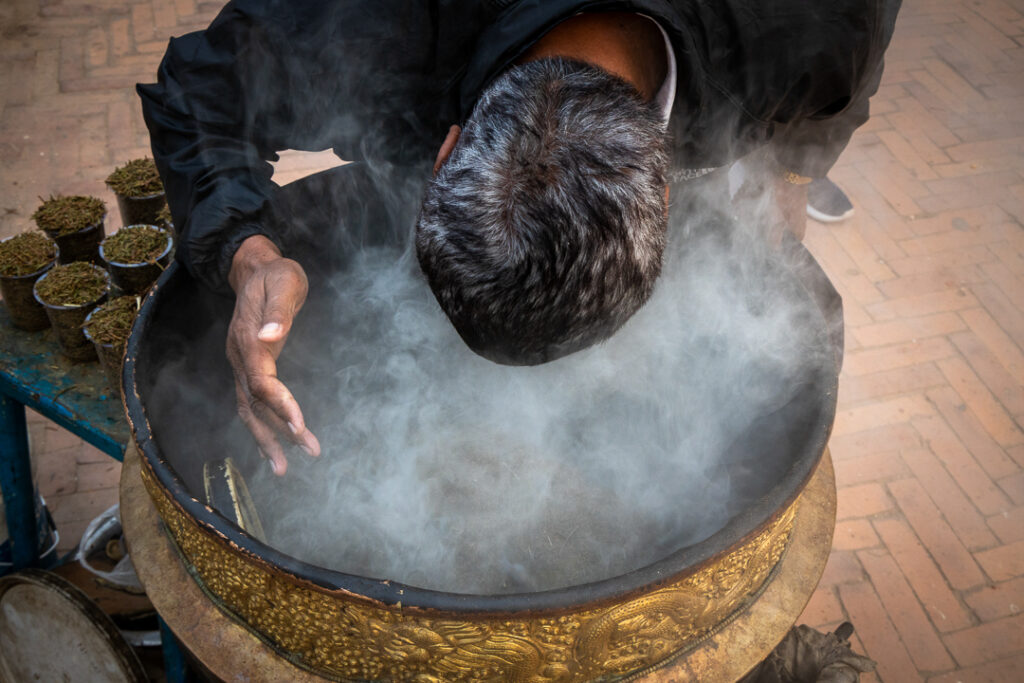


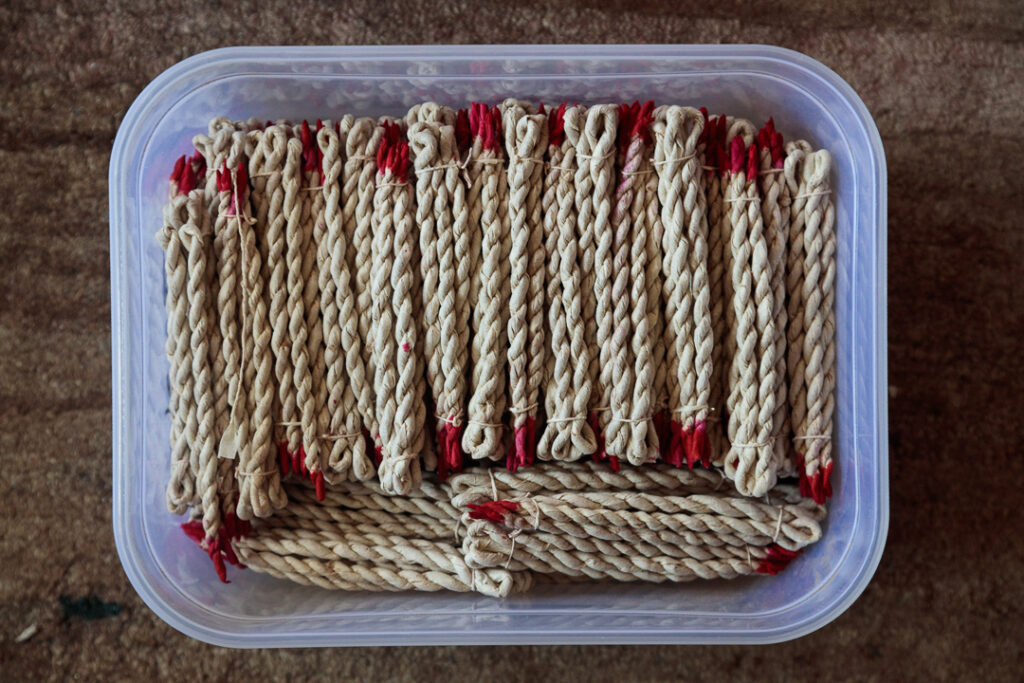

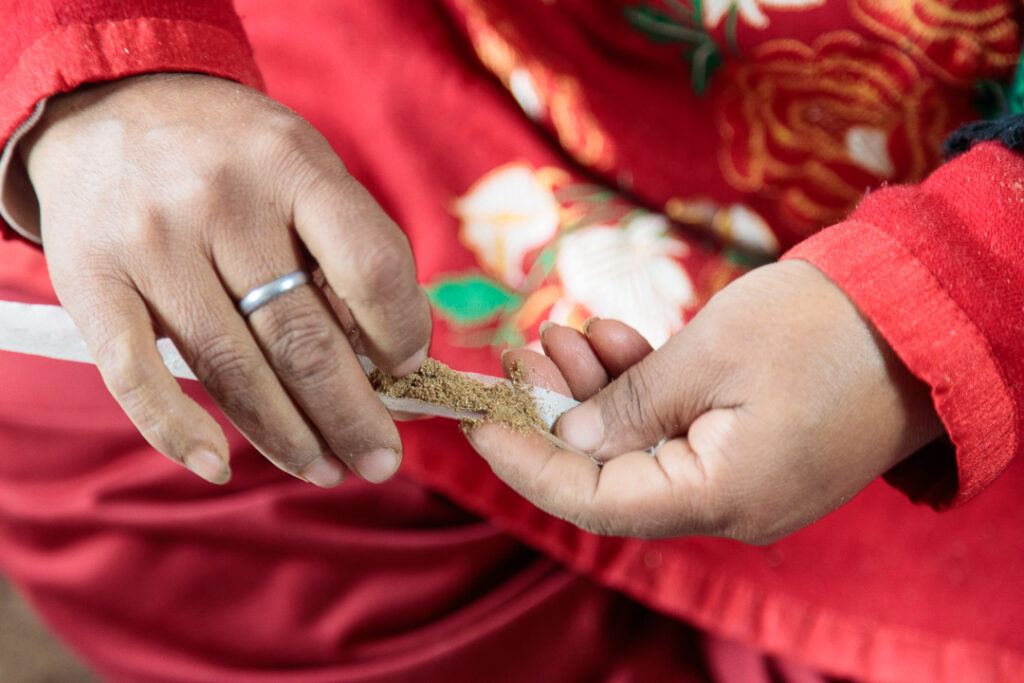
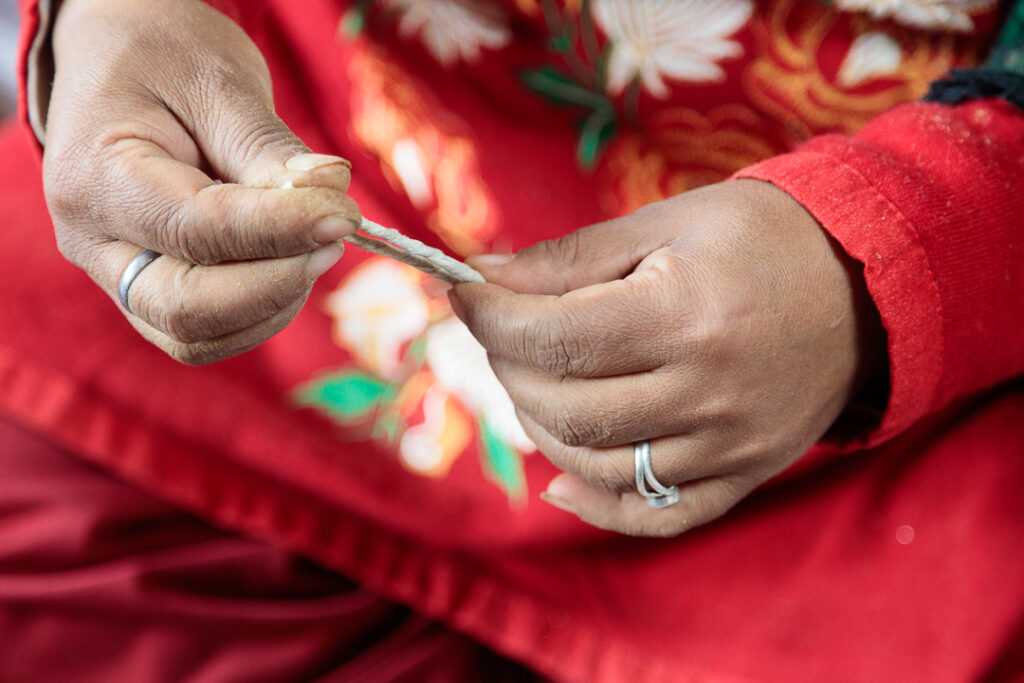


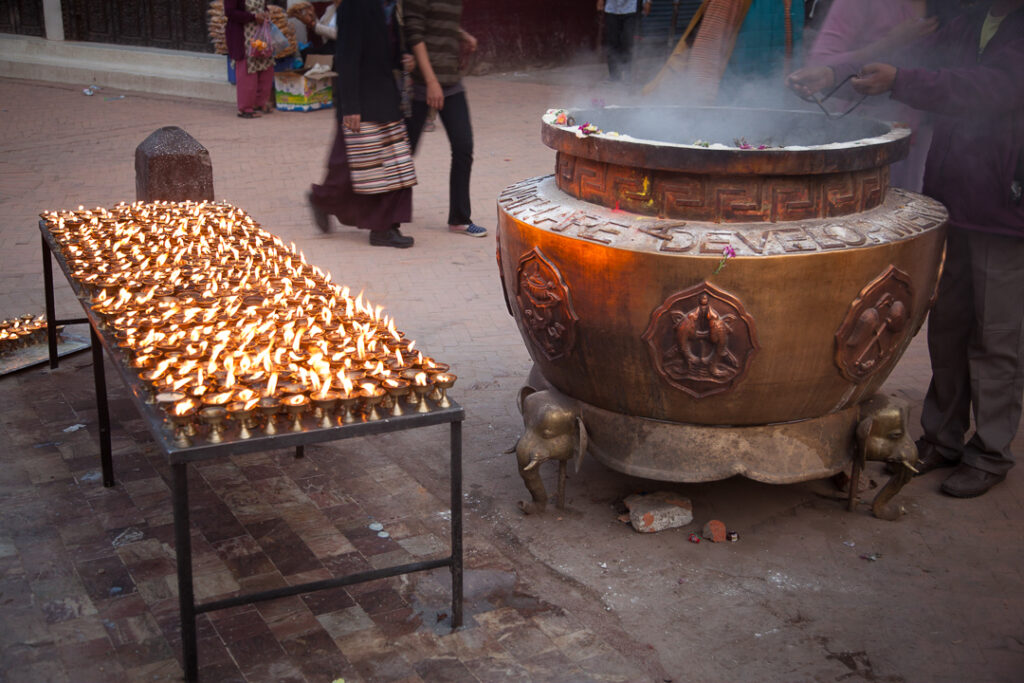




Comments
Beautifully illustrated and the image of – “a devotee stoops over a copper cauldron to bathe in the aroma of incense” is just insane !